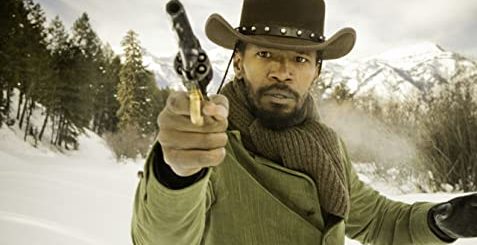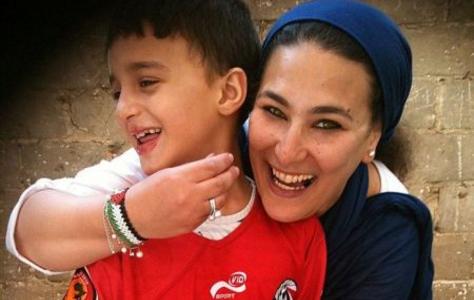‘We’re the Dream Team of Arabic hip-hop’ – by Randa Safieh
 In this article published in the November edition of Middle East magazine, Randa Safieh talks to some of the artists from the Lyrical Alliance collective, inspired by the legendary ‘Mu’Allaqat‘ poems, which performed in Camden last month.
In this article published in the November edition of Middle East magazine, Randa Safieh talks to some of the artists from the Lyrical Alliance collective, inspired by the legendary ‘Mu’Allaqat‘ poems, which performed in Camden last month.
Last month Dash Arts and the Camden Roundhouse presented a collaboration of some of the most prominent Arab hip-hop heavyweights. It was a ground-breaking event, with traditional Arabic verse at its core, hosted by DJ MK, of KISS FM fame, which succeeded in crossing many linguistic and cultural boundaries.
The artists come from an array of countries around the Arab world, from Algeria to Amman, from the West Bank to West London. There was Tamer Nafar, frontman of the three-piece collective DAM, the original pioneers of the Palestinian hip-hop movement having launched it into the international arena. Then there was Shadia Mansour, British-born Palestinian rapper and leading lady of Palestinian hip-hop; Rabah Ourrad, controversial Algerian rapper notorious for his courageous and witty political critique of Algerian reality; Lebanese bilingual rapper Rayess Bek; Samm, ambassador of Jordanian hip-hop and winner of the Jordanian ‘Beit El Hip-hop’ talent show; and VJ Jana Saleh from Lebanon.
Most acclaimed was US mastermind, Brooklyn MC Talib Kweli, whose brand of hip-hop does not conform to the usual  connotations of the genre. His social and political awareness places him in a league of his own, which is exactly why African-American Kweli appeals to hip-hop artists of the Arab world. Even hip-hop titan Jay-Z raps about him: ‘If skills sold, truth be told, I’d probably be, lyrically, Talib Kweli’.
connotations of the genre. His social and political awareness places him in a league of his own, which is exactly why African-American Kweli appeals to hip-hop artists of the Arab world. Even hip-hop titan Jay-Z raps about him: ‘If skills sold, truth be told, I’d probably be, lyrically, Talib Kweli’.
This one-of-a-kind event ended with a momentous finale featuring all of the Lyrical Alliance members for a never-seen-before hip-hop collaboration.
The London event followed a succession of workshops and studio sessions conducted in the last year by the artists, based around the traditional ‘Mu’Allaqat‘ poems. ‘Mu’Allaqat‘ refers to a series of seven Arabic odes from pre-Islamic times, painting a picture of Bedouin life, each of which is esteemed as the best of the poet’s collection. ‘Mu’Allaqat‘ transliterates as “the suspended odes”, as they were sewn with golden thread and hung in the Kaaba at Mecca. They were recited by highly respected travelling poets who gave a sense of unity to the region.
 Allowing the artists to delve into the cultural roots of their music was the founding idea behind the Lyrical Alliance project. Together, they overlaid the traditional odes with Urban African-American hip-hop beats and incorporated their own experiences to form a new genre of musical fusion, creating five new songs performed that evening.
Allowing the artists to delve into the cultural roots of their music was the founding idea behind the Lyrical Alliance project. Together, they overlaid the traditional odes with Urban African-American hip-hop beats and incorporated their own experiences to form a new genre of musical fusion, creating five new songs performed that evening.
In joining these two musical cultures, neither one has been sacrificed or threatened, but instead developed an original form of refashioned tradition. The Lyrical Alliance collective mirrored the true origins and tradition of the ‘Mu’Allaqat‘ poems as travelling poets uniting regions. As Rayess Bek put it: “We realized that those poets used to live like rappers, living a free life, drinking, thinking, happy or depressed – they just write! We could identify with those poets. This was a turning point.”
In a conversation with Tamer Nafar and Rayess Bek, who have previously collaborated, Rayess Bek explained that the hip-hop artists, whom he refers to as ‘the Dream Team of Arabic hip-hop’, all met in a London studio for one week to write five songs based on the ‘Mu’Allaqat‘ poems. Nafar, who primarily rapped in Arabic, thought that the Lyrical Alliance experience would lead to “more collaborations in the Arab world and more hip-hop unity” and hopes this event will have attracted more hip-hop fans outside of the Arab audience: “We know all about the African-Americans through hip-hop, now we can exchange cultures, and more work with the world’s artists, such as Talib Kweli.” Rayess Bek echoes this, adding: “I hope we can take this experience further, maybe we could record an album together. That would be fantastic – United Arabic Rappers.”
Nafar decided to rap in his native Arabic after hearing Ourrad’s band Le Micro Brise Le Silence, confiding: “It’s their album (Rabah President) that changed my life, made me focus more on my Arabic lyrics.” He also enjoyed working with Mansour and now turns his hand to singing as well as rapping. “Working with Shadia, I must say I have learned a lot, she is so talented. Now melodies are something I like, and before I recorded a melody where I sing not rap, I consulted her.”
Hip-hop is generally regarded as music by, and for, the oppressed and the marginalized. Urban American hip-hop emerged in the mid 1970’s in the South Bronx of New York City by Jamaican DJs and quickly spread, encompassing social, economical and political issues faced by African-Americans living in the USA. But today it is also the voice of choice for many marginalized and oppressed people outside of the United States, who see their concerns reflected in African-American hip-hop. Rap began as a form of storytelling of African-American life with an overlay of rhythmic and electronic musical samples. By 1998, it has earned the title of the most popular form of contemporary music, having outsold every other genre and selling 81 million CD’s and cassettes.
Since hip-hop is considered to be the biggest youth-driven culture since the Sixties rock movement, it is neither a coincidence nor a surprise that the younger generation of Arabs has so forcefully taken on this cultural, political, social and musical phenomenon. The Arab hip-hop movement has in many ways become the privileged expression of the unheard voices of identity at home and in exile, and for Palestinians, also an expression of nationhood. Rayess Bek partially attributes hip-hop’s appeal to its accessibility: “You don’t need a lot of techniques; you don’t need to be a composer. This music is open to anyone.”
The importance of Arab hip-hop artists lies in their capacity to be advocates of Arabic concerns and identity. Rayess Bek explains the effect of Arab hip-hop on a non-Arab audience as “huge! They see Arabs through media, stereotyped: women with the scarf, religious people with guns, etc… For once, they will see young people rapping (with a girl!), freedom of speech … even if they won’t understand the lyrics, they will identify themselves with us. We give them another image of Arabs.”
Since the late 1990’s, Arab hip-hop has flourished into an astonishing cultural phenomenon. Using hip-hop as a symbol of resistance and national identity continues a long tradition in the Middle East of using music as a political tool. The success of Lyrical Alliance is yet another assertion of the power of music in human affairs. Despite the geographical dispersion of the Arabs, their music still has the ability to unite them in their continuous attempts to define their culture and identity.
 Hip-hop has also cemented a new form of social cohesion, bridging the distance between Arabs living within the Arab world and those of the diaspora, whose paths might not otherwise cross. Hip-hop’s ability to influence, affect and activate social, economic and political change was conveyed at its finest through this event, by celebrating culture and politics.
Hip-hop has also cemented a new form of social cohesion, bridging the distance between Arabs living within the Arab world and those of the diaspora, whose paths might not otherwise cross. Hip-hop’s ability to influence, affect and activate social, economic and political change was conveyed at its finest through this event, by celebrating culture and politics.
With special thanks to Tamer Nafar and Rayess Bek
Randa Safieh is a full-time secondary Music teacher in London and a member of the research network ‘Exploring Song and Music among Palestinians’, established by Birzeit University and the University of Gothenburg.
Images in this article, from top to bottom: Tamer Nafar, Shadia Mansour, Rayess Bek, Rabah Ourrad, Talib Kweli, Jordanian rapper Sam.




Recent Comments